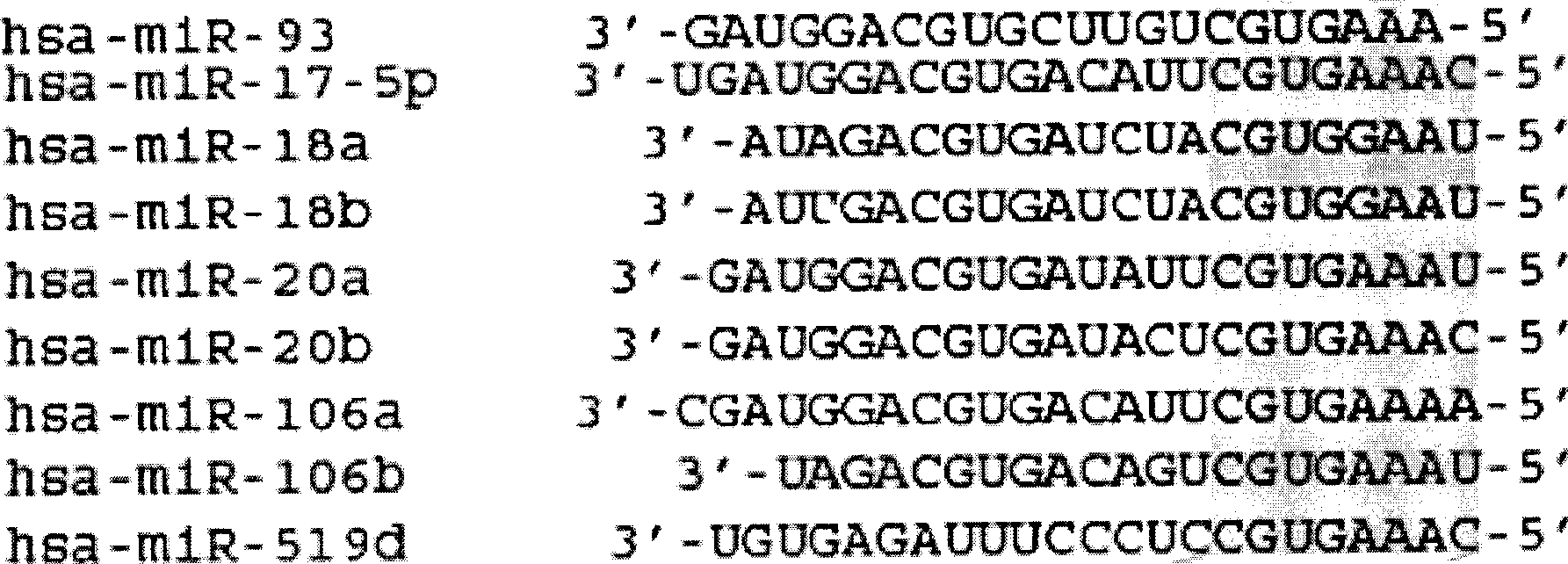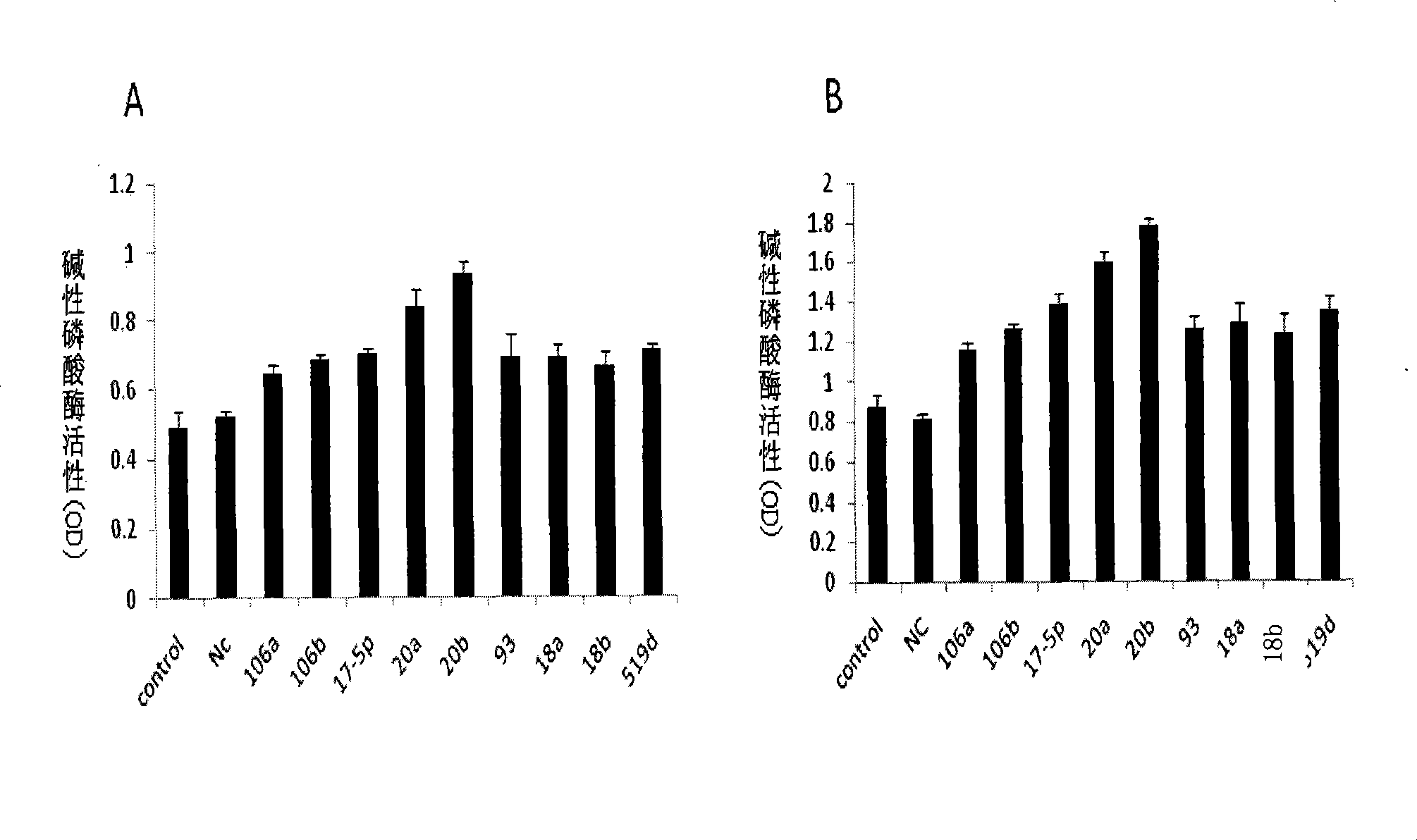Micro RNA capable of inducing stem cell to differentiate toward osteoblasts and use thereof
A kind of adult stem cell and tiny technology, applied in the field of microRNA, can solve the problems of unsustainable curative effect, high toxicity, lack of evidence of cell replacement, etc., and achieve the effect of avoiding poor stability and long half-life
- Summary
- Abstract
- Description
- Claims
- Application Information
AI Technical Summary
Problems solved by technology
Method used
Image
Examples
Embodiment 1
[0050] Embodiment 1, microRNA induces osteogenic differentiation of stem cells
[0051] 1) Preparation of microRNA
[0052] MicroRNAs are selected from the sequences of mature microRNAs of the human miR-20 family, from miRBase ( http: / / microrna.sanger.ac.uk / sequences / index.shtml ), named respectively as miR-17-5p (its nucleotide sequence is sequence 1 in the sequence listing), miR-18a (its nucleotide sequence is sequence 2 in the sequence listing), miR-18b (its nucleotide sequence The acid sequence is sequence 3 in the sequence listing), miR-20a (its nucleotide sequence is sequence 4 in the sequence listing), miR-20b (its nucleotide sequence is sequence 5 in the sequence listing), miR-93 (its nucleotide sequence is sequence 6 in the sequence listing), miR-106a (its nucleotide sequence is sequence 7 in the sequence listing), miR-106b (its nucleotide sequence is sequence 8 in the sequence listing) and miR-519d (its nucleotide sequence is sequence 9 in the sequence listing). Th...
Embodiment 2
[0084] Embodiment 2, preparation of cells for treating orthopedic diseases
[0085] The patient's own bone marrow was collected, MSCs were collected by Ficoll-Hapague density gradient centrifugation, and then placed in a-MEM medium (purchased from GIBCOL) containing 10g / 100ml fetal bovine serum (FBS) and 1g / 100ml penicillin and streptomycin, 37 °C, 5% CO 2 For culture, the mixed blood cells can be removed through continuous medium replacement and subculture, and pure MSCs can be obtained after 5 passages. Then the MSCs cells were divided into 5×10 5 The density of / hole inoculates 12 orifice plate, after 24 hours, according to the instruction manual of the Lipofectamine2000 of Invitrogen Company, 9 microRNAs (its nucleotide sequence is the sequence 1-9 in the sequence table) and control 1 (its nucleoside) respectively The acid sequence is the sequence 10 in the sequence list) to transfect MSCs cells, and the transfected MSCs cells continue to be cultured for 4-6 days, which...
PUM
 Login to View More
Login to View More Abstract
Description
Claims
Application Information
 Login to View More
Login to View More - R&D
- Intellectual Property
- Life Sciences
- Materials
- Tech Scout
- Unparalleled Data Quality
- Higher Quality Content
- 60% Fewer Hallucinations
Browse by: Latest US Patents, China's latest patents, Technical Efficacy Thesaurus, Application Domain, Technology Topic, Popular Technical Reports.
© 2025 PatSnap. All rights reserved.Legal|Privacy policy|Modern Slavery Act Transparency Statement|Sitemap|About US| Contact US: help@patsnap.com



